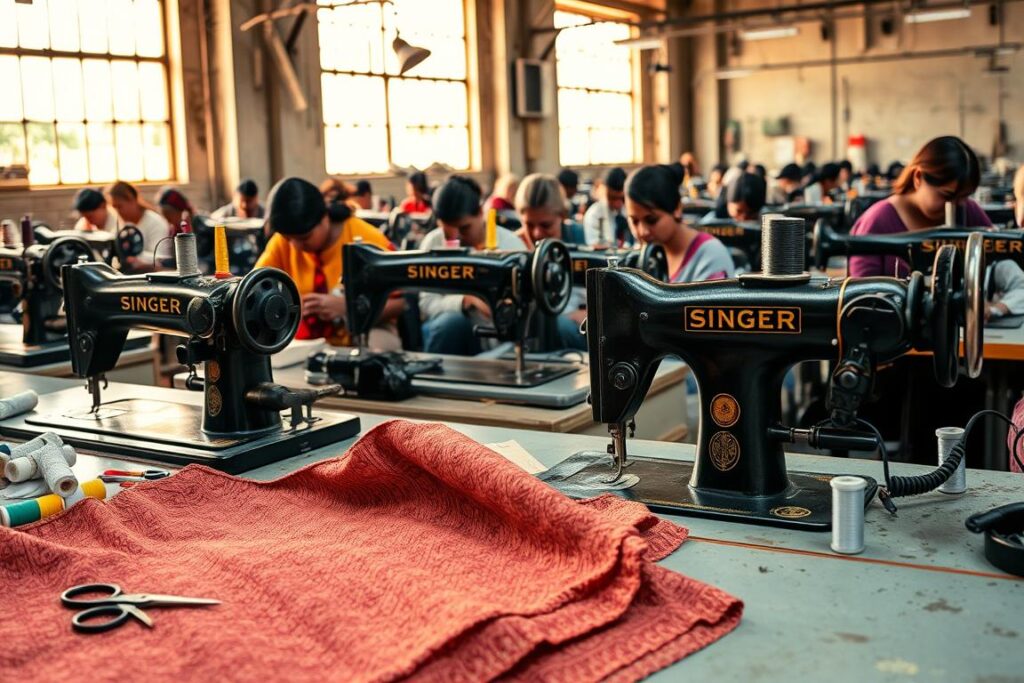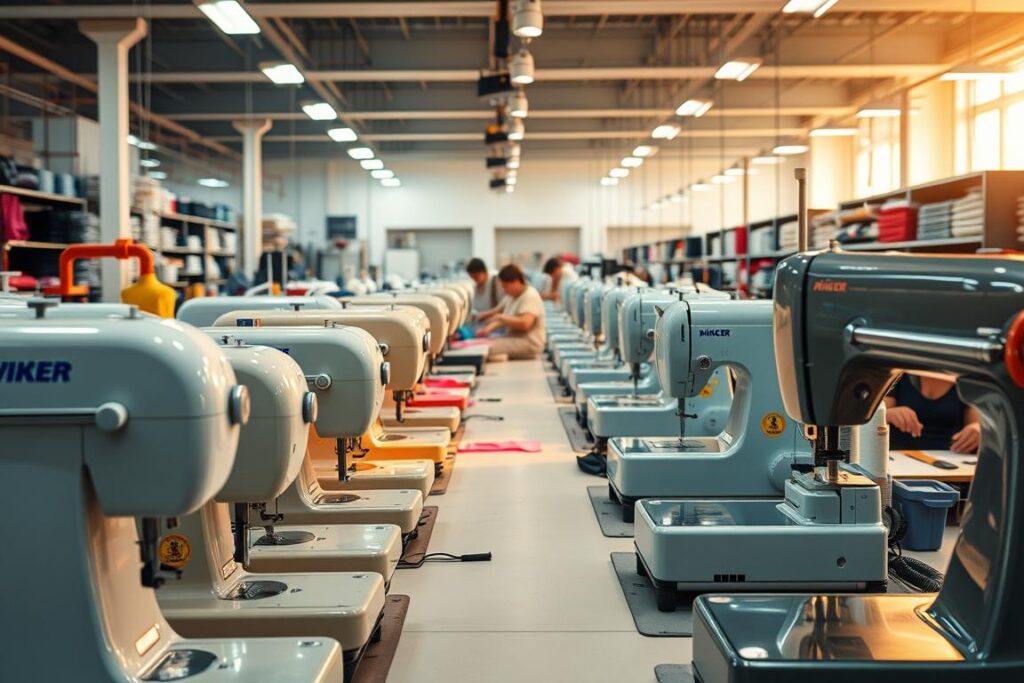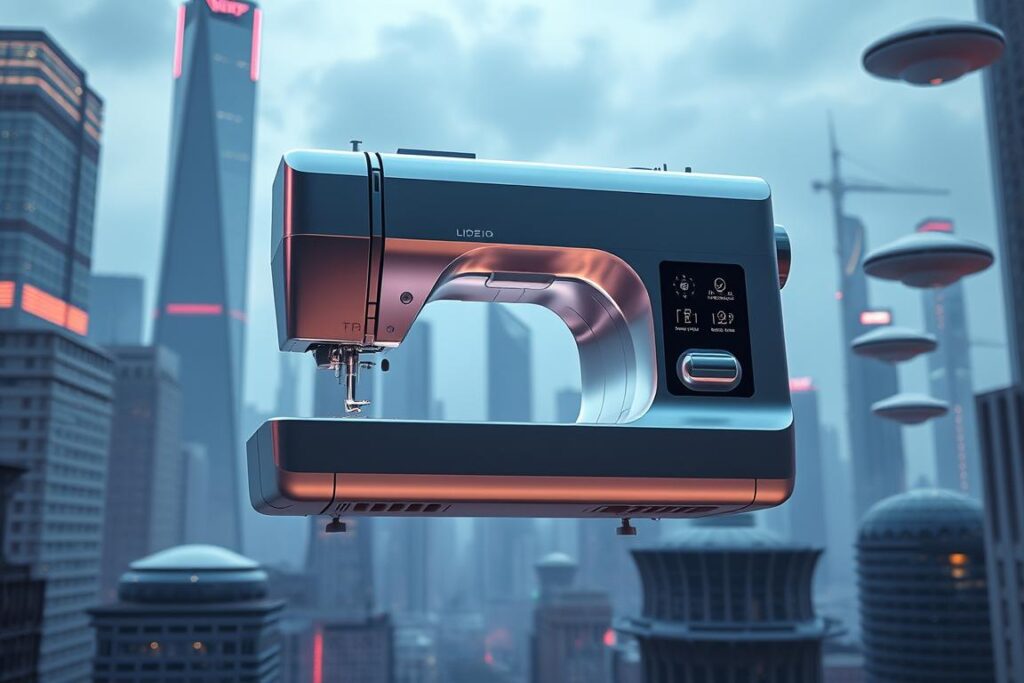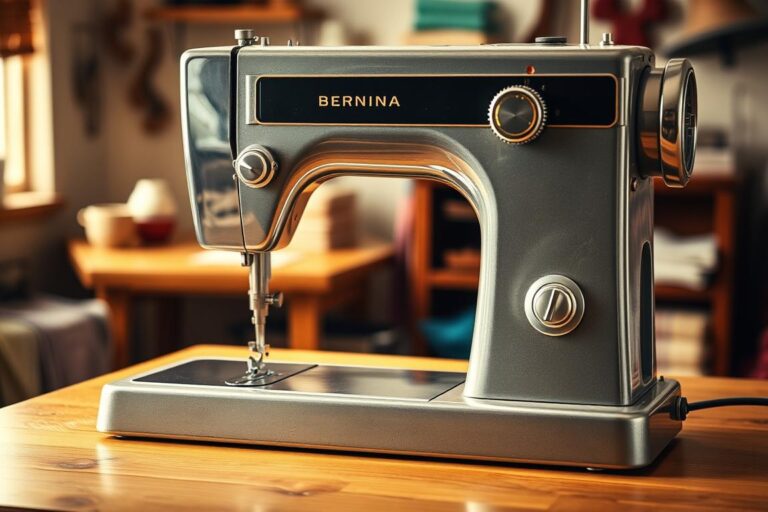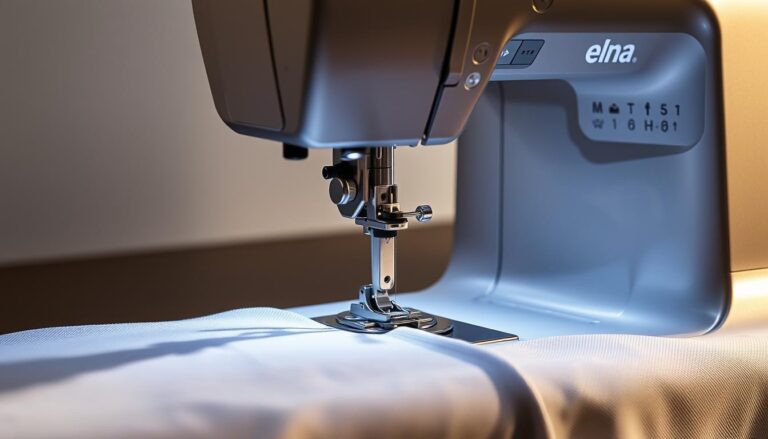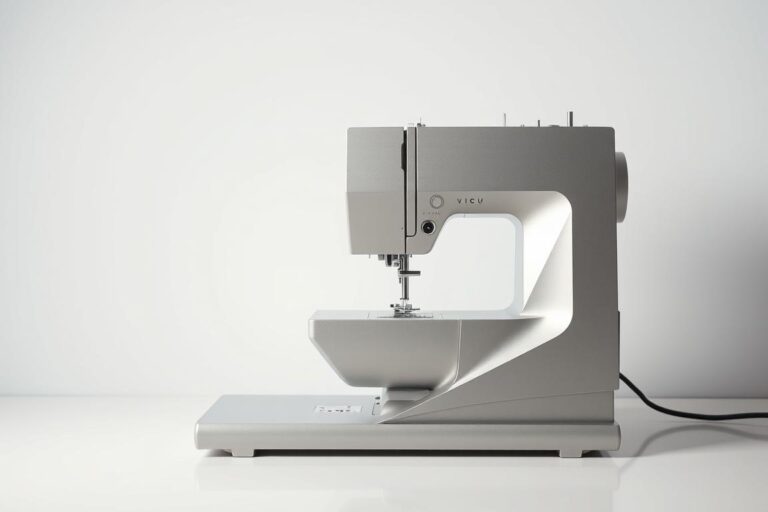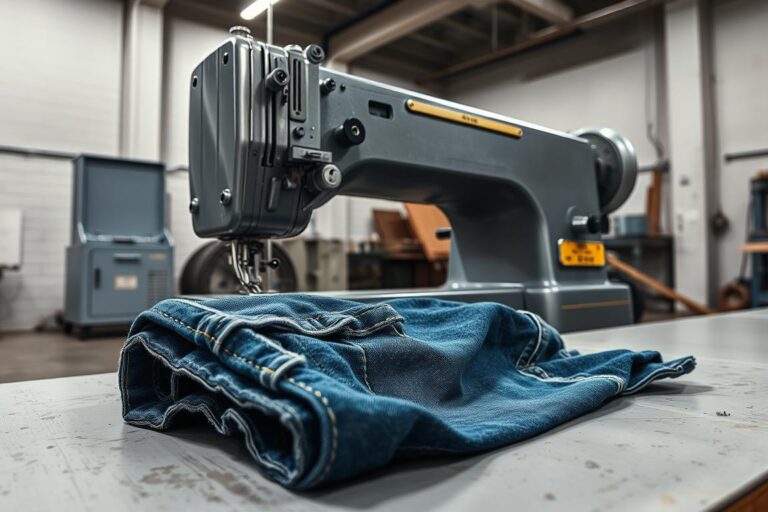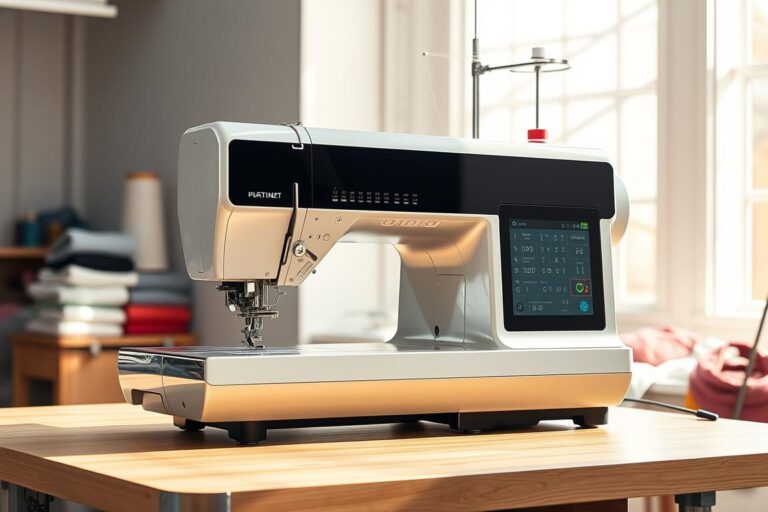Explore Global Sewing Styles: How Machine Preferences Vary Worldwide Today
In a world where creativity meets technology, the sewing machine market is experiencing remarkable growth. Did you know it’s projected to reach $6 billion by 2028? This isn’t just about stitching fabric—it’s about innovation, sustainability, and empowerment.
From Europe’s thriving DIY culture to the rise of computerized models, the sewing machine has become a tool for both artistry and entrepreneurship. Over 70% of new crafters who started during the pandemic now run successful small businesses. Isn’t it fascinating how these devices are shaping modern creativity?
Join us as we explore the vibrant evolution of this industry. Discover how cutting-edge technology and sustainable practices are transforming the way we create. Ready to dive in?
Introduction to the Global Sewing Machine Market
The journey of sewing machines began with a spark of innovation in the 18th century. From Thomas Saint’s 1790 prototype to Bernina’s crystal-encrusted B790 PLUS, we’ve stitched together over 230 years of mechanical evolution. Today, the market size of this industry is a testament to its enduring relevance.
Asia’s manufacturing dominance shines brightly, with Juki and Brother controlling 38% of industrial machine production. The Asia Pacific region holds a staggering 41% market share, led by powerhouses like China and Japan. This analysis highlights the region’s pivotal role in meeting global demand.
Did you know modern embroidery machines can complete complex patterns 33% faster than pre-pandemic models? This leap in efficiency reflects the industry’s commitment to innovation. Meanwhile, USHA International’s partnership with SIDBI has empowered over 250,000 Indian women through sewing micro-enterprises, showcasing the social impact of these devices.
During lockdowns, residential machine sales jumped 62% as crafters embraced slow fashion. This surge underscores the growing appeal of DIY creation and sustainable practices. As we explore the companies and trends shaping this market, it’s clear that sewing machines are more than tools—they’re catalysts for creativity and change.
Key Drivers of the Sewing Machine Industry
The rise of the sewing machine market is fueled by innovation and changing consumer habits. From online sales to sustainable practices, the industry is evolving at a rapid pace. Let’s dive into the factors shaping this exciting transformation.
One of the biggest game-changers is the digital revolution. Online sales now account for 42% of residential machine purchases, with an impressive 89% growth since 2020. This shift makes it easier than ever for crafters to access the tools they need to bring their creative visions to life.
Another key driver is the growing demand for sewing machines in the technical textiles sector. Think bulletproof vests, UV-resistant marine fabrics, and other specialized applications. This sector is growing at an 8.7% CAGR, highlighting the need for advanced stitching technology.
Fast fashion’s environmental impact is also pushing brands toward sustainable production methods. European Parliament regulations are encouraging companies to adopt eco-friendly practices, creating a ripple effect across the industry. This shift aligns perfectly with the rise of slow fashion and DIY culture.
Social media is playing a huge role too. Meet the “stitch-fluencers”—creators who are driving 73% of Gen Z’s interest in sewing hobbies. Their inspiring content is encouraging a new generation to pick up a needle and thread.
Finally, the customization craze is taking the market by storm. Janome’s Disney-themed products, for example, sell out in just 8 hours during launches. This trend reflects the growing preference for personalized, unique creations.
Together, these factors are shaping the future of the sewing machine market, making it more dynamic and inclusive than ever before. Whether you’re a seasoned crafter or a beginner, there’s never been a better time to join the movement!
Technological Advancements in Sewing Machines
The future of stitching is here, and it’s smarter than ever! From AI-powered features to IoT integration, sewing machines are stepping into the digital age. Let’s explore the innovations that are transforming the way we create.
Take Brother’s Luminaire XP2, for example. This computerized marvel uses AI to correct stitches in real time, ensuring flawless results every time. Meanwhile, Juki’s PLK-J series integrates 3D printing technology, allowing for precise adjustments even with heavy materials like car seatbelts.
For embroidery enthusiasts, SINGER’s SE9180 is a game-changer. With mySewnet integration, it cuts design time by 40%, making intricate patterns faster and easier to create. And let’s not forget the Bernette 79 Yaya Han Edition, which comes with a designer software suite for endless creative possibilities.
Industrial sewing machines are also pushing boundaries. Mitsubishi’s AMS-221F uses machine learning to perfect seam consistency across 1,000+ fabric types. Juki’s PLK-J automatically adjusts for heavy-duty materials, making it a favorite in industries like automotive and aerospace.
Eco-conscious crafters will love Energy Star-certified models, which reduce power consumption by 28% during continuous use. These innovations not only save energy but also align with the growing demand for sustainable practices.
Welcome to the IoT sewing studio! New machines sync with apps for real-time design updates and error detection, making your creative process smoother than ever. Whether you’re a beginner or a pro, these advancements are here to inspire and empower you.
Global Sewing Styles: How Machine Preferences Vary Worldwide
Across continents, the art of stitching takes on unique forms, shaped by culture and technology. From Europe’s heritage crafts to Africa’s vibrant designs, every region has its own story to tell. Let’s explore how these diverse needs influence the machine market and the tools people choose.
In Europe, 62% of crafters prefer mechanical machines for their precision and durability. Parisian ateliers, for instance, rely on Bernina’s mechanical models to achieve flawless haute couture finishes. These machines are perfect for intricate, heritage-inspired designs.
Asia leads the way in computerized adoption, with 78% of sales going to tech-enabled models. Tokyo’s sewers demand machines with WiFi and cloud storage for seamless pattern sharing. This tech-savvy approach reflects the region’s embrace of innovation in the industrial sewing sector.
Africa is seeing a 140% growth in manual machine sales. Nigerian tailors, for example, favor hand-crank models for their versatility and independence from electricity. These machines are ideal for creating vibrant Ankara designs, even in remote areas.
In north america, the quilting craze is driving demand for machines with 12″+ workspaces. 89% of US buyers prioritize this feature, making it a key factor in the machine market. Meanwhile, Australia’s beach culture has led to a surge in saltwater-resistant overlock machines, perfect for coastal living.
- Europe: Mechanical machines for heritage crafts.
- Asia: Computerized models with advanced tech features.
- Africa: Hand-crank machines for vibrant designs.
- North America: Large workspaces for quilting.
- Australia: Saltwater-resistant overlock machines.
From Paris to Lagos, the world of stitching is as diverse as the people who practice it. These preferences highlight the adaptability of the industrial sewing industry, meeting the needs of every culture and climate.
Market Segmentation by Type
The sewing machine market is divided into distinct categories, each catering to unique needs. Whether you’re a beginner or a pro, there’s a product designed just for you. Let’s explore the three main types: electric, manual, and computerized.
Electric models are the workhorses of the industry, holding a 47% market share. Perfect for commercial spaces, they handle 8-hour daily operations with ease. These machines are ideal for those who need reliability and power.
The computerized segment is growing at an impressive 9.3% CAGR. Take Janome’s M17, for example—it handles 280 embroidery designs without manual adjustments. These machines are a dream for crafters who love precision and innovation.
In developing markets, manual machines remain a favorite. They power 68% of small African tailoring shops, offering affordability and independence from electricity. These budget-friendly heroes are perfect for vibrant designs and remote areas.
- Electric models dominate commercial spaces.
- Computerized machines excel in precision and versatility.
- Manual machines are preferred for their affordability and simplicity.
Here’s a pro tip: New sewers save 22% more fabric using automatic thread cutters in mid-range models. These features make the creative process smoother and more efficient.
From electric workhorses to computerized marvels, the market offers something for everyone. Choose the product that aligns with your needs and start creating today!
Application Areas of Sewing Machines
From fashion to space exploration, sewing machines are making their mark. Did you know 61% of these devices are used for apparel production? But their application goes far beyond clothing, touching industries you might not expect.
The medical textiles sector is growing at an impressive 11.4% CAGR. Machines here meet strict sterilization protocols, creating everything from ICU curtains to Nomex fire suits. These innovations are saving lives and improving healthcare standards.
In the automotive industry, heavy-duty models like Juki’s double-needle machines ensure perfect stitching for car interiors. Even NASA relies on modified industrial machines for spacesuit repairs—proof that sewing technology is out of this world!
Eco-conscious creators are also embracing sewing machines. Vintage Singer models are the secret weapon for 73% of upcycled denim artists. Meanwhile, 3D-knit shoe prototypes require specialized computerized flatbed machines, pushing the boundaries of footwear design.
From apparel to non-apparel uses, sewing machines are proving their versatility. Whether you’re stitching a dress or repairing a spacesuit, these tools are here to inspire and empower your creativity.
Distribution Channels and Sales Trends
The way we buy and experience sewing tools is evolving faster than ever! E-commerce now dominates the distribution channel, accounting for 58% of residential sales. This shift reflects the convenience and accessibility of online retail platforms.
Did you know 73% of buyers watch video reviews before making a purchase? YouTube unboxings drive 62% of first-time machine purchases among millennials. These videos build trust and help crafters make informed decisions.
In-store demos are another powerful tool, increasing conversions by 41%. Stores offering free threading classes see an 89% boost in accessory sales. These hands-on experiences create a deeper connection between buyers and products.
Here’s a pro tip: Brands are adopting innovative strategies to stand out. Some offer pattern libraries with machine purchases, while others are developing VR try-before-you-buy experiences. These creative approaches are reshaping the market share landscape.
- YouTube unboxings drive millennial purchases.
- In-store demos boost conversions by 41%.
- Free threading classes increase accessory sales.
- VR experiences are the next big thing in shopping.
From India to Europe, the global marketplace is thriving. USHA’s India-made machines now power 38 European fashion schools, showcasing the reach of modern distribution channels. These trends highlight the exciting future of shopping for creative tools!
Leading Companies in the Sewing Machine Industry
Behind every stitch lies the innovation of top companies revolutionizing the craft. These leaders are shaping the industry with cutting-edge technology and sustainable practices. Let’s dive into the key players driving this vibrant market.
Brother Industries is a household name, holding 22% of the residential market share. Last year alone, they sold 1.4 million Innov-ís models, proving their dominance in home crafting. Their machines are perfect for beginners and pros alike, offering reliability and ease of use.
In the industrial sector, Juki Corporation leads with 34% of revenue. Their heavy-duty machines are trusted by automotive and aerospace industries for precision and durability. From car seatbelts to parachutes, Juki’s technology is pushing boundaries.
For luxury enthusiasts, Bernina’s Crystal Edition machines are a dream come true. Featuring Swarovski elements, these $15,000 models grace the workrooms of Paris Fashion Week. They’re a testament to the artistry and elegance of high-end sewing.
USHA, an international corporation, is making waves with its vocational training initiatives. Partnering with 1,200 Indian schools, they’re empowering the next generation of crafters. This genius play is fostering creativity and entrepreneurship across the country.
SVP Worldwide has solidified its position through strategic acquisitions. Owning iconic brands like Singer, Husqvarna, and Pfaff, they’re a powerhouse in the industry. Their diverse portfolio caters to every sewing need, from home crafting to industrial applications.
Niche marvels like Merrow are also making an impact. Their military contracts include parachute stitching specs, showcasing the versatility of sewing technology. These specialized applications highlight the industry’s adaptability and innovation.
From residential to industrial, these companies are redefining the sewing landscape. Their commitment to quality, creativity, and sustainability is inspiring crafters worldwide. Whether you’re stitching at home or in a high-tech workshop, these leaders are here to support your journey.
Challenges Facing the Sewing Machine Market
The sewing machine industry is thriving, but it’s not without its hurdles. From skilled labor shortages to counterfeit products, the market faces a mix of modern and traditional challenges. Let’s explore the key issues shaping this vibrant sector.
One major concern is the lack of skilled technicians. In Germany alone, 28,000 new professionals are needed by 2025 to meet demand. This training crisis highlights the growing gap between innovation and workforce readiness.
Counterfeit products are another pressing issue. Fake Janome parts account for 63% of warranty claims, costing both consumers and manufacturers. This trend undermines trust in the market and raises concerns about product quality.
For beginners, the learning curve can be steep. A staggering 54% abandon sewing within six months, often due to the complexity of modern machines. Features like automatic thread cutters and digital interfaces, while innovative, can overwhelm new users.
- Training crisis: Germany needs 28,000 new technicians by 2025.
- Counterfeit alert: Fake parts cause 63% of warranty claims.
- Complexity conundrum: 68% of returned machines cite “too many features.”
- Greenwashing watch: Only 12% of “eco-friendly” claims are certified.
Despite these challenges, the industry is adapting. Zara’s repair clinics, for example, are boosting home machine sales by encouraging sustainable practices. This shift reflects broader trends toward slow fashion and DIY culture.
As we navigate these obstacles, the sewing machine industry continues to evolve. By addressing these issues head-on, we can create a more inclusive and sustainable future for crafters everywhere.
Future Trends in the Sewing Machine Industry
The future of crafting is being redefined by groundbreaking innovations in stitching technology. From AI-powered devices to sustainable practices, the industry is evolving at an unprecedented pace. Let’s dive into the exciting trends shaping the next generation of sewing tools.
One of the most transformative trends is AI integration. By 2027, 74% of machines are projected to feature smart capabilities. Imagine devices that auto-order thread when supplies run low or adjust settings based on fabric type. These advancements are making crafting more intuitive and efficient than ever.
3D sewing is another game-changer, especially in aerospace applications. With an 18% CAGR, this technology is perfect for creating NASA-inspired fabrics and specialized materials. It’s proof that stitching isn’t just for fashion—it’s reaching new heights, literally!
Sustainability is also taking center stage. Blockchain tracking for cotton initiatives ensures transparency in sourcing. Future machines may even include sustainability scorecards, helping crafters track their eco-impact per project. It’s a win for creativity and the planet.
- Smart machines: Auto-order thread and adjust settings.
- 3D sewing: Perfect for aerospace and specialized fabrics.
- Blockchain: Transparent tracking for sustainable materials.
- AR tutorials: Real-time guidance for beginners.
- Subscription models: Pay-per-stitch services in development.
Education is getting a high-tech upgrade too. AR glasses could soon provide real-time stitching tutorials, making learning easier and more interactive. And with subscription-based models on the horizon, access to advanced tools is becoming more affordable.
These innovations highlight the growth and potential of the sewing industry. Whether you’re a seasoned crafter or just starting, the future is full of possibilities. Ready to embrace these exciting changes?
Impact of COVID-19 on the Sewing Machine Market
The pandemic reshaped the way we approach creativity and craftsmanship. With lockdowns in place, many turned to DIY projects, leading to a 228% surge in US machine sales. This unexpected rise wasn’t just a trend—it became a lasting movement.
One of the most remarkable shifts was the demand for sewing tools to produce PPE. In 2020, 73% of machines sold were used for mask-making. This wave of creativity not only addressed urgent needs but also inspired a new generation of crafters.
Supply chain disruptions posed challenges, causing an average 89-day delay in deliveries and a 19% price increase. Despite these hurdles, the industry adapted, finding ways to meet the growing demand.
The pandemic also left a surprising legacy. Today, 42% of those who picked up sewing during lockdowns now run Etsy shops. What started as a hobby has turned into thriving small businesses for many.
- Mask-making madness: 73% of machines sold in 2020 were used for PPE production.
- Surprising legacy: 42% of pandemic sewing hobbyists now run Etsy shops.
- Factory shutdowns led to 89-day average delivery delays in 2021.
- Silver lining: YouTube sewing tutorials gained 2.8B views during lockdowns.
- Lasting impact: Post-COVID, 54% of buyers prioritize “hobby/business flexibility.”
YouTube became a lifeline for beginners, with sewing tutorials amassing 2.8 billion views. These resources made it easier for newcomers to learn and stay engaged. Even now, 61% of pandemic buyers continue to sew actively.
Looking ahead, the focus has shifted to flexibility. 54% of buyers now prioritize machines that support both hobbies and small businesses. This trend reflects the lasting impact of COVID-19 on the production and use of sewing tools.
From mask-making to entrepreneurship, the pandemic transformed the sewing landscape. It’s a testament to the resilience and creativity of crafters everywhere. Ready to see how this evolution continues?
Consumer Behavior and Preferences
Understanding what drives consumer choices is key to staying ahead in the sewing machine market. Today’s crafters prioritize ease-of-use, with 68% valuing simplicity over advanced features. They also demand versatility—89% want machines that handle multiple fabric types effortlessly.
Color plays a surprising role in purchasing decisions. 47% of buyers are influenced by vibrant or pastel options, especially Gen Z, who favor Instagrammable designs. This trend reflects a shift toward aesthetics in crafting tools.
Sustainability is another major factor. 68% of consumers are willing to pay a premium for eco-certified products. This aligns with the growing demand for sustainable practices in crafting.
- Mental health bonus: 73% of sewers report reduced anxiety during projects, making sewing a therapeutic activity.
- Accessory addiction: The average buyer spends 42% more on presser feet and other add-ons.
- Community connection: 89% join online sewing groups within six months of purchase, fostering a sense of belonging.
These insights help companies tailor their offerings to meet evolving needs. Whether it’s through eco-friendly innovations or vibrant designs, the focus is on empowering crafters to create with confidence.
Conclusion
From Tokyo’s tech hubs to vibrant Nigerian markets, these tools unite creativity across borders. Whether you’re mending jeans or launching a fashion label, modern sewing machines empower every stitch. They’re more than devices—they’re gateways to innovation and self-expression.
The $6B market is thriving, driven by sustainable practices and inclusive design. As trends evolve, the focus remains on eco-friendly solutions and user-friendly features. This growth ensures that crafting remains accessible to everyone, from beginners to experts.
Ready to join the stitching community? Your perfect machine awaits! Pro tip: Start with versatile mid-range models—89% of experts recommend computerized starters for their ease and functionality. Let’s create something amazing together!
